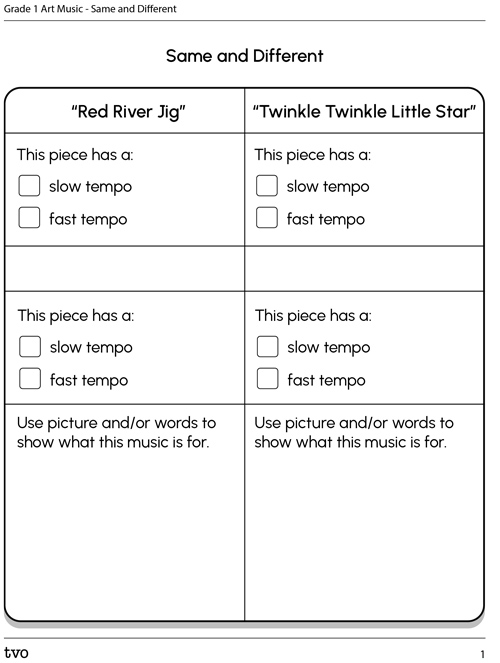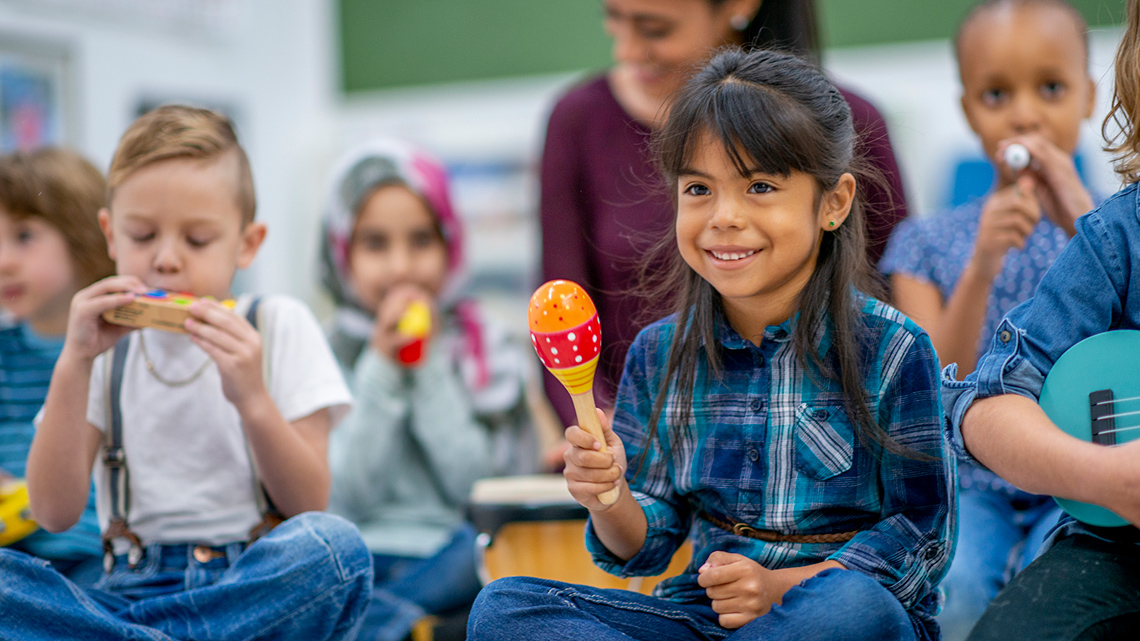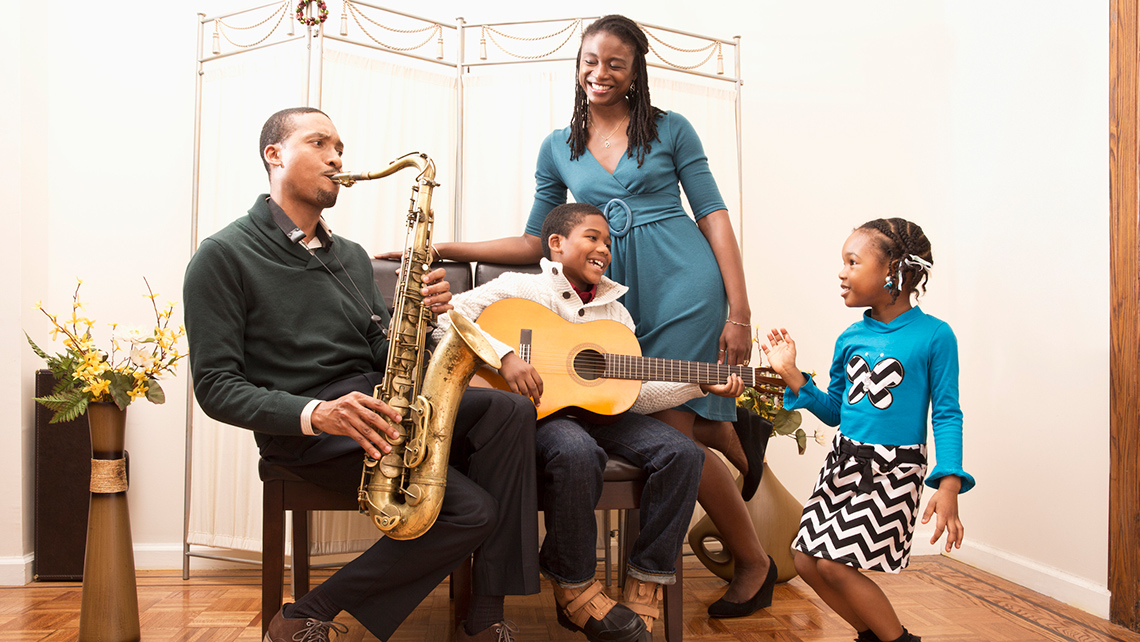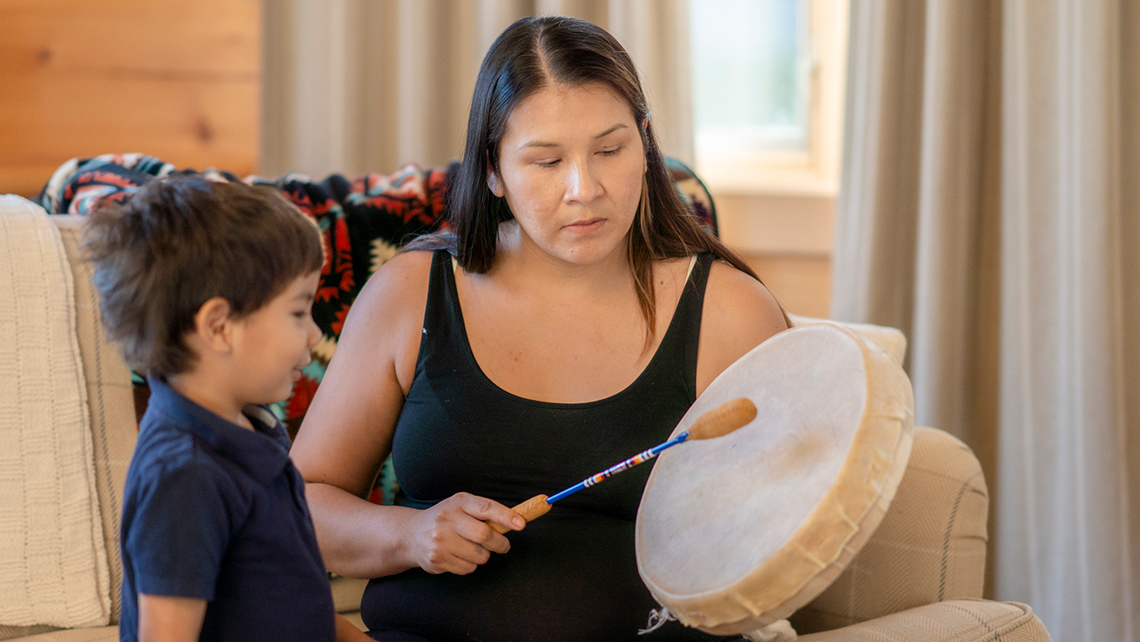Minds On
Today’s vocabulary
How fast or slow a piece of music is performed. Connected to the element of duration.
The level of softness or loudness, or intensity. Some examples include: crescendo, decrescendo; forte (f – loud), fortissimo (ff – very loud), mezzo forte (mf – moderately loud); piano (p – soft), pianissimo (pp – very soft), mezzo piano (mp – moderately soft).
Let’s get started!

Explore the following piece of music, “Red River Jig" by John Arcand.
Consider the following questions as you explore this music:
- How might this music make someone feel?
- What might this music be for?
Record your thoughts using a method of your choice.
“Red River Jig”
Action
Get ready, get set…
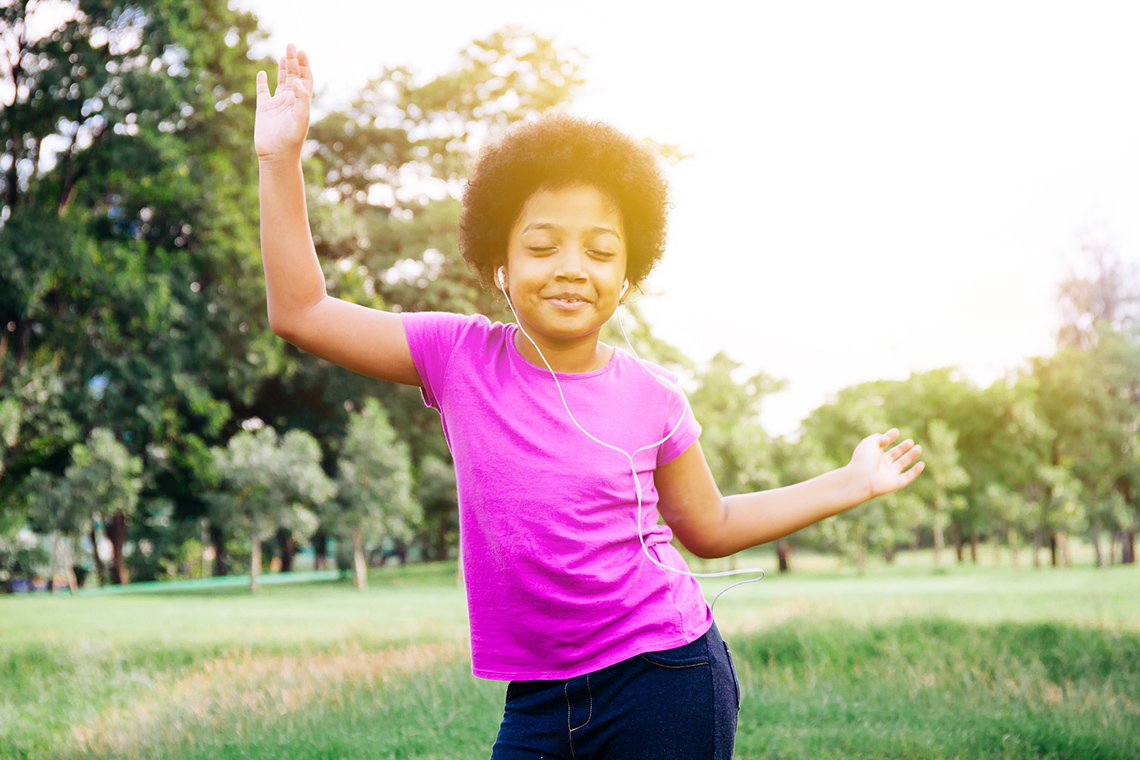
How did the “Red River Jig” make you feel?
Did you want to move around to the music? Jump, skip, clap, tap?
This type of music is dance music!
Dancers listen to the music playing and move their feet to follow it.
Explore the following conversation between Teacher A and Teacher B to learn more about the music in the “Red River Jig”.

Two teachers talking. The first teacher says: “The instrument used in the “Red River Jig” is called a fiddle. A fiddle is the same as a violin. But there is a difference between fiddle playing and violin playing.” The second teacher responds: “That’s right, Teacher A. They are used to play different types of music. For example, a fiddle is used to play folk music like the “Red River Jig” and a violin is used for classical music.”
Explore the “Red River Jig”
Let’s have some fun!
Explore the following video. In this video, someone shows us how they like to dance to the “Red River Jig.”
Let’s explore the music for the “Red River Jig” again.
Why might this be called dance music?
Use these questions to help you search for clues.
Press the ‘Answer’ button to learn more.
The tempo of the “Red River Jig” is fast.
Explore the following fun fact about the “Red River Jig”!

Two teachers talking. The first teacher says: “The “Red River Jig” is a Métis dance. It has fast and fancy steps. This is also why the music for it is fast.” The second teacher says: “Some Elders say that the steps in the jig can sound like horse’s hooves!”
Press below to access an audio version of this fun fact:
“Red River Jig” Facts
Let’s try another question.
Press the ‘Answer’ button to learn more.
Explore the following fun fact about the “Red River Jig”!

Two teachers talking. The first teacher says: “Dance music like the “Red River Jig” brings people together to celebrate.” The second teacher says: “They celebrate life and the people they have around them.”
Press below to access an audio version of this fun fact:
Red River Jig Facts
Go!

For this activity, we will be exploring the lullaby “Twinkle Twinkle Little Star.”
This lullaby is sung in a language called Tlingit.
Press the ‘Hint’ button to learn more about Tlingit.
Tlingit is not just the name of a language but also the name of the Tlingit people. Tlingit means “people of the tides.”
The Tlingit are Indigenous peoples of the Pacific Northwest regions of British Columbia, Yukon, and Alaska.

“Twinkle Twinkle Little Star”
Let’s explore the lullaby.
As you explore the lullaby, think about how it is the same as the “Red River Jig” and how it is different from the “Red River Jig.”
Use the following questions to guide your thinking.
- Is the music fast or slow?
- Is the music loud or soft?
- When might someone use this music?
Ready? Here is the lullaby “Twinkle Twinkle Little Star.”
“Twinkle Twinkle Little Star”
Source: Courtesy of Sealaska Heritage Institute
How is “Twinkle Twinkle Little Star” different from the “Red River Jig?” How is it the same?
Record your ideas in the following fillable and printable Same and Different document. You can also use another method of your choice to complete this activity.
Consolidation
Putting it all together

Using the words tempo, dynamics, dance, and lullaby, share the most important or memorable things you experienced in this learning activity.
You can choose to:
- draw a picture and label the important parts using the words tempo, dynamics, dance, and lullaby
- tell someone about this learning activity using the words tempo, dynamics, dance, and lullaby
- write about this learning activity using the words tempo, dynamics, dance, and lullaby
- make a recording of yourself moving to the music or talking about what you experienced using the words tempo, dynamics, dance, and lullaby
Reflection
How do you feel about what you have learned in this activity? Which of the next four sentences best matches how you are feeling about your learning? Press the button that is beside this sentence.
I feel…
Now, record your ideas about your feelings using a voice recorder, speech-to-text, or writing tool.
Press ‘Discover More’ to extend your skills.
Discover MoreCelebration songs
Do you know any celebration songs?
Are there songs that you sing for special times of the year?
In Canada, we have four seasons. They are spring, summer, fall and winter. Many Indigenous communities have songs that celebrate and give thanks for the changing of the seasons. What songs could you use to celebrate and give thanks?
